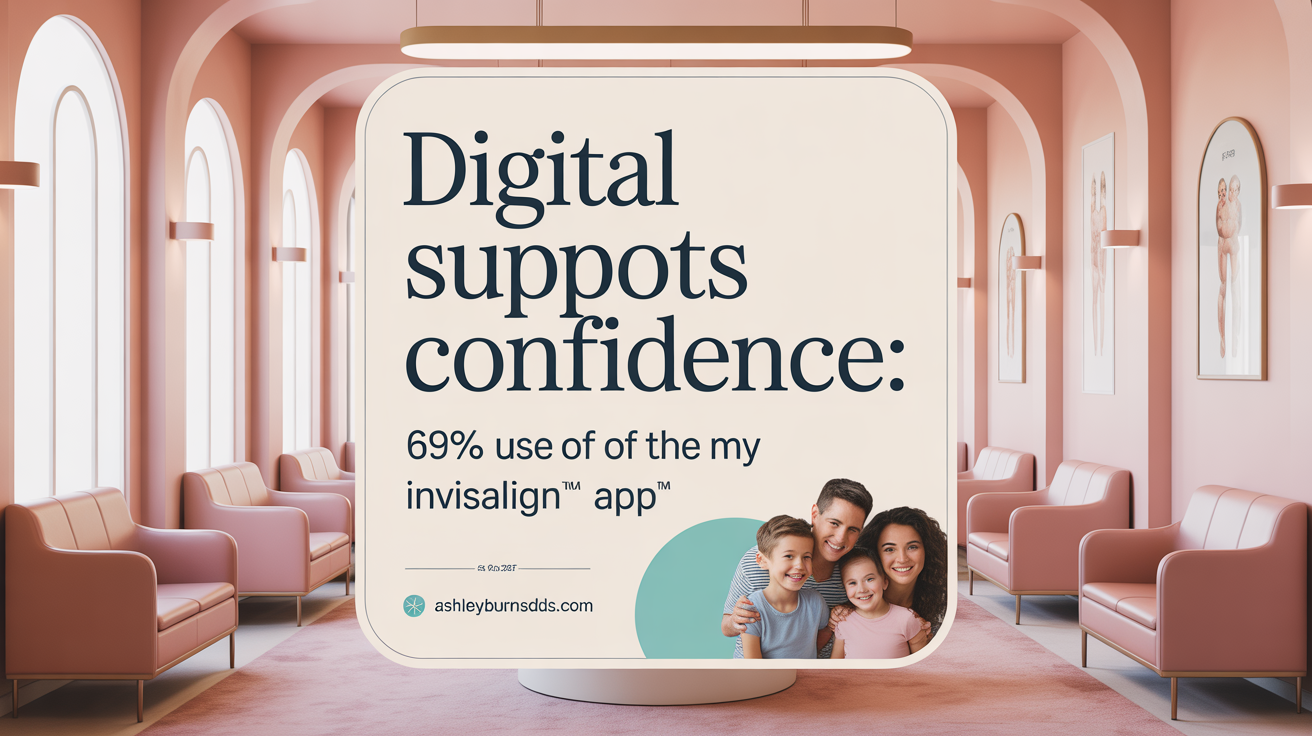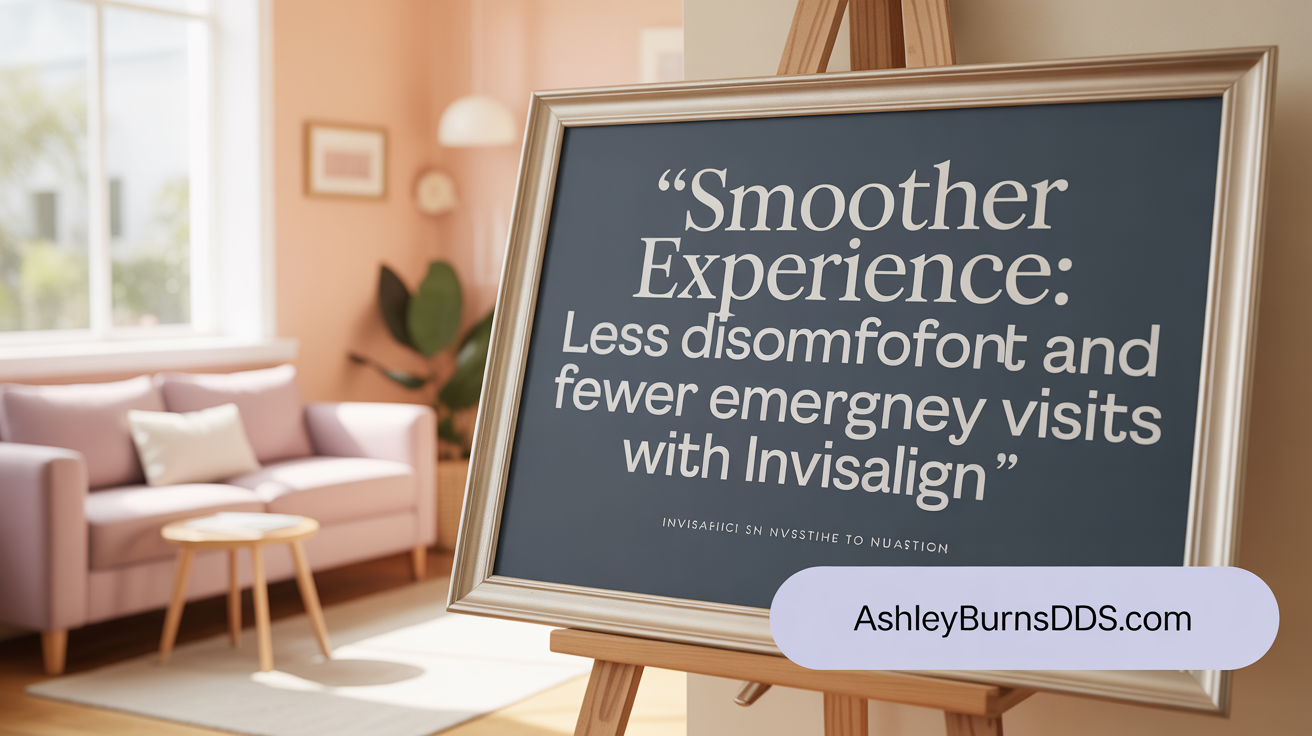Understanding Patient Preferences in Orthodontic Care
This article delves into the satisfaction rates reported by Invisalign users compared to those using traditional braces. We explore statistical data, research findings, and patient perspectives to answer the crucial question: What percentage of Invisalign users report higher satisfaction than with braces? By examining factors influencing satisfaction and effectiveness, the narrative provides an evidence-based comparison tailored for patients and dental professionals alike.
Overall Satisfaction Rates: Invisalign Compared to Traditional Braces

What are the satisfaction rates for Invisalign and traditional braces?
Patients generally report high satisfaction levels with both Invisalign and traditional braces. Invisalign boasts a customer satisfaction rate of around 96%, reflecting its popularity and positive user feedback. Most users find the aligners more comfortable and discreet, which significantly enhances their treatment experience.
The overall success rates for Invisalign range from about 80% to 90%, especially effective for mild to moderate orthodontic issues such as crooked teeth, gaps, and slight bite problems. Many patients see noticeable improvements within three to six months, and treatment durations typically span from 6 to 24 months.
Traditional braces, however, tend to achieve success rates exceeding 91%. They are often preferred for more complex cases, such as severe malocclusion or significant misalignment, where maximum control and precise adjustments are required.
Comparing patient experience and outcomes
In terms of comfort and convenience, Invisalign users frequently report less pain and discomfort compared to traditional braces. Since Invisalign aligners are smooth and removable, they eliminate many of the irritation problems associated with brackets and wires.
Patients using Invisalign also appreciate the convenience of eating and maintaining oral hygiene, as aligners are taken out during meals and for cleaning. Additionally, the ability to visualize treatment progress through computer modeling helps maintain motivation and understanding of expected outcomes.
While traditional braces are effective for complex cases, they often involve more discomfort, lifestyle restrictions, and emergency visits for broken brackets or wires.
Statistical data on success rates
| Treatment Option | Success Rate | Typical Duration | Suitable Cases |
|---|---|---|---|
| Invisalign | 80-90% | 6-24 months | Mild to moderate misalignments |
| Traditional Braces | Above 91% | 12-36 months | Severe misalignments, complex cases |
Both aligners and braces are proven effective, but the choice depends on the severity of the dental issues and patient preferences. Invisalign tends to be favored for its comfort and aesthetics, while traditional braces are often used for more challenging corrections.
Overall, patient satisfaction is high with both options, with Invisalign providing a more comfortable and discreet experience for many, and traditional braces offering reliable results for all types of orthodontic problems.
Key Factors Driving Higher Satisfaction Among Invisalign Users

What factors contribute to higher patient satisfaction with Invisalign compared to traditional braces?
Patients using Invisalign® generally report a higher level of satisfaction than those with traditional orthodontic options. Several aspects of Invisalign's design and functionality make it a more appealing choice.
The aesthetic appeal of Invisalign is one of its biggest advantages. The aligners are made from clear, smooth plastic, making them nearly invisible when worn. This discreet appearance appeals especially to adults and teens concerned about their looks during treatment.
Invisalign's removable aligners offer significant lifestyle benefits. Being able to take out the aligners for eating and drinking means patients can enjoy their favorite foods without restrictions, unlike traditional braces with brackets and wires. Maintaining oral hygiene is also simpler, as patients can brush and floss easily without tripping over wires or brackets.
Comfort is another standout factor. Most users find Invisalign aligners more comfortable than traditional braces, reporting less irritation and pain. While mild discomfort, such as pressure and a temporary lisp, may occur at the start of treatment or when changing aligners, these issues typically diminish quickly.
Psychological and lifestyle benefits further contribute to satisfaction. Patients often feel more confident and attractive because of the aligners' discreet nature. This boost in self-esteem is particularly notable among teenagers, who experience a double increase in self-confidence compared to fixed braces.
In addition, Invisalign treatment usually involves fewer disruptions—fewer emergency visits and less ongoing adjustment discomfort—further enhancing overall patient wellbeing. With predictable results in shorter time frames—sometimes as quickly as three months for minor cases—many find Invisalign to be an effective and satisfying orthodontic solution.
In summary, Invisalign’s aesthetic advantage, removability, comfort, and positive impact on confidence significantly drive higher levels of patient satisfaction compared to traditional braces.
| Feature | Benefit | Additional Information |
|---|---|---|
| Aesthetic Discretion | Nearly invisible | Popular among adults and teens |
| Removability | Easier eating and cleaning | Maintains oral health better |
| Comfort | Less irritation | Short adjustment period |
| Lifestyle Impact | No dietary restrictions | Less disruption to daily routines |
| Psychological Boost | Increased confidence | Especially for teens |
The combination of these factors explains why many Invisalign users report a more positive experience and overall higher satisfaction.
The Role of Invisalign Technology and the My Invisalign™ Mobile App in Patient Satisfaction

Usage Rates of the Invisalign App
A significant majority of Invisalign users—about 69.39%—regularly utilize the My Invisalign™ mobile application. Usage varies, with some patients engaging daily, while others use the app mainly when prompted by reminders. This high engagement level highlights the app’s importance in supporting patients throughout their treatment.
Comfort and Adjustment: Invisalign Vs Braces Experience

Initial discomfort and adaptation period
Most patients starting Invisalign notice a brief adjustment phase where mild discomfort and a temporary lisp may occur. This usually lasts only a few days as they get used to wearing the aligners. Similarly, traditional braces can cause initial soreness and irritation as the mouth adjusts to wires and brackets.
Comparison of pain and oral irritation
While Invisalign is generally less painful than traditional braces, users may still feel pressure when a new set of aligners is introduced. Many report that the overall experience is more comfortable, with significantly fewer emergency visits for broken wires or brackets. If irritation occurs, using orthodontic wax can help soothe the gums.
Ease of orthodontic maintenance and follow-ups
Invisalign aligners are removable, making daily cleaning and oral hygiene straightforward. Patients only need to remove the aligners to eat, drink, brush, and floss, simplifying maintenance. Follow-up visits often involve quick, painless aligner replacements rather than tightening appointments typical of braces.
Use of pain relief and orthodontic wax
For initial discomfort, over-the-counter pain relievers can alleviate pressure-related pain during the first days of a new aligner. Orthodontic wax can be applied to any areas of irritation caused by aligners, providing additional comfort during treatment.
Overall, Invisalign offers a smoother and more discreet experience, with most users reporting higher satisfaction regarding comfort compared to traditional braces. The manageable adaptation period and simple maintenance routines contribute to positive treatment experiences.
Effectiveness of Invisalign Relative to Traditional Braces
How does the effectiveness of Invisalign compare to traditional braces in achieving desired orthodontic results?
Invisalign is particularly effective for treating mild to moderate orthodontic issues such as crowded teeth, gaps, and minor bite corrections. Many users report that the treatment is quicker and offers a better aesthetic experience, thanks to its nearly invisible aligners. Studies indicate that for conditions not overly complex, Invisalign can produce significant improvements within as little as three to six months, with many cases completing treatment in 12 to 18 months.
However, for more severe or complicated dental problems—like complex bite issues or significant misalignment—traditional braces tend to offer more reliable outcomes. Braces exert continuous, adjustable force directly on the teeth, allowing for precise control essential in complex cases. While Invisalign’s innovative materials and computer modeling contribute to effective treatment planning, their capability is limited when addressing severe malocclusions.
Meta-analyses reveal that both Invisalign and traditional braces have similar overall success rates in the correct hands. Nonetheless, the predictability and control of traditional braces often provide an advantage for difficult cases.
Invisalign’s popularity is bolstered by its removability and comfort, which significantly improve patient satisfaction and compliance. Still, the effectiveness heavily depends on patients adhering to the wear schedule—aiming for 20 to 22 hours daily.
Limitations for complex orthodontic issues
While Invisalign works well for many straightforward cases, it may face limitations in treating complex or severe dental problems. Cases involving jaw misalignments, extensive tooth movements, or multiple dental issues might require traditional braces for better control.
In summary, Invisalign offers a less invasive and more aesthetically pleasing option with comparable results in mild and moderate cases. For complex orthodontic corrections, traditional braces generally provide more comprehensive and predictable results, making them the preferred choice when severity exceeds the capabilities of clear aligners.
Discontinuation Rates and Challenges in Invisalign Treatment
What percentage of patients discontinue Invisalign treatment and why?
Approximately 4% of Invisalign patients experience treatment failure, which is often linked to discontinuation. Studies estimate that between 20% and 30% of patients may choose to stop treatment before achieving full results. The main reasons for discontinuation include discomfort during wear, lack of motivation, and the perception that treatment progress is too slow.
Many users cite the inconvenience of compliance—such as inconsistent alignment wearing—as a barrier. Additionally, complex cases or lifestyle conflicts, like difficulty maintaining the oral hygiene routine or forgetting to wear aligners, can contribute to early cessation. Some patients also express dissatisfaction with the outcome, which diminishes motivation to continue.
Successful Invisalign treatment relies on strict adherence to wearing the aligners for 20 to 22 hours daily, alongside proper case planning and ongoing provider support. When patients lack motivation or face challenges in compliance, their likelihood of discontinuing rises.
How can these challenges be mitigated?
To reduce the chances of early discontinuation, it's essential to select experienced and qualified providers who can tailor the treatment plan accurately.
Regular follow-up appointments allow orthodontists to monitor progress, address concerns, and motivate patients effectively.
Educational efforts explaining the benefits of consistent wear and the importance of compliance can improve adherence. Also, utilizing tools such as reminder apps or motivational messages can help patients stay on track.
Moreover, addressing discomfort early by providing tips, such as using orthodontic wax or over-the-counter pain relief, can make wearing aligners more tolerable.
What is the role of patient motivation and provider support?
Patient motivation plays a crucial role in the success of Invisalign treatment. When users are committed, they are more likely to wear aligners as prescribed and achieve their desired outcomes.
Provider support, including clear communication, setting realistic expectations, and providing encouragement, is equally important. Supportive interactions create a positive treatment experience, reduce anxiety, and foster compliance.
In summary, while some patients discontinue Invisalign prematurely, emphasizing proper provider guidance, patient education, and addressing challenges promptly can significantly improve adherence and overall satisfaction.
Oral Health Outcomes and Quality of Life Improvements with Invisalign
How does Invisalign impact gingival health?
Many patients experience significant improvements in their gum health during Invisalign treatment. Studies show that Invisalign users had lower scores for gingival inflammation, such as the Gingival Index (GI) and the Sulcus Bleeding Index (SBI), compared to those using fixed orthodontic appliances (FOA). The smooth, removable aligners allow for easier cleaning and less plaque buildup around the gums, promoting healthier gums overall.
How does Invisalign compare with fixed appliances (FOA)?
Patients generally report higher satisfaction with Invisalign over traditional braces. They notice fewer emergencies like broken wires or brackets and prefer the discreet, comfortable aligners. Studies confirm that Invisalign users have better gingival health metrics, lower plaque scores, and report less discomfort.
What are the benefits regarding plaque control and oral hygiene?
Invisalign aligners are removable, allowing users to brush and floss normally. This feature reduces plaque accumulation and promotes better oral hygiene. Research indicates that, during Invisalign treatment, plaque levels are comparable or slightly lower than in patients with fixed braces. Good cleaning routines further improve comfort and overall dental health.
How does Invisalign influence patients' quality of life?
Patients report greater satisfaction with Invisalign because of its aesthetic, comfort, and convenience advantages. Most notice improvements in health and wellbeing early in treatment. Teen users, in particular, often experience a boost in self-esteem. Overall, Invisalign helps maintain oral health, boosts confidence, and enhances the quality of life during orthodontic treatment.
| Aspect | Invisalign Outcomes | Traditional Braces Outcomes | Additional Details |
|---|---|---|---|
| Gingival health | Better scores, lower inflammation | Higher inflammation, more plaque | Studies compare GI and SBI scores[1] |
| Patient satisfaction | High (96%) and higher than FOA | Lower; more discomfort and emergencies | Surveys and user feedback[2] |
| Oral hygiene effectiveness | Easier cleaning, less plaque buildup | Difficult to clean around brackets | Aligners are removable, aids in oral hygiene[3] |
| Treatment duration | 6-24 months, often faster than braces | Same as or longer than Invisalign | Computer modeling plans treatment time |
Sources and further information are available by searching "oral health benefits Invisalign."
Trends and Popularity of Invisalign as Reflected by Global Usage and Patient Feedback
How many people worldwide have used Invisalign?
Invisalign has treated over 2.4 million patients globally since its inception in 1997. As of 2021, this number had grown to more than 10 million, highlighting its widespread acceptance. The number continues to rise as more people seek discreet and effective orthodontic solutions.
What is the demographic breakdown of Invisalign users?
Invisalign's popularity spans various age groups, with over 1 million teenagers having used the aligners. Adults now represent about 20% of all orthodontic patients, and treatment is common among those over 50. These flexible age ranges demonstrate Invisalign's broad appeal and suitability for many different life stages.
Why is Invisalign gaining popularity?
Several factors contribute to its increasing use. Patients value its discreet, nearly invisible aligners, which boost confidence during treatment. The ability to remove aligners for eating and cleaning simplifies oral hygiene and lifestyle. Additionally, treatment times are shorter, often around 12 to 18 months, with some cases even completing in as little as 6 months.
How effective and comfortable is Invisalign?
Patients consistently report high satisfaction rates, with a 96% customer satisfaction figure. Most find aligners more comfortable than traditional braces, especially after the initial adjustment period. The plastic aligners are custom-made and smooth, reducing discomfort and irritation. The aligners also work faster—up to 50% quicker than traditional braces—making treatment more efficient.
What features enhance patient confidence?
The mobile app associated with Invisalign, My Invisalign™, plays a notable role. Approximately 69% of users engage with it regularly, using reminders to change aligners and sharing progress images. This digital support system improves adherence, boosts confidence, and helps maintain continuity of care.
| Aspect | Information | Additional Details |
|---|---|---|
| Number of Users | Over 10 million worldwide | Since 2018, over 2.4 million patients treated, with significant growth |
| Age Range | Teens and Adults | Teen use exceeds 1 million; 20% of adult orthodontic patients |
| Treatment Duration | 6 to 24 months | Most adult treatments take 12-18 months |
| Satisfaction Rate | 96% | High patient satisfaction contributing to popularity |
| App Usage | 69% regularly use My Invisalign™ | Enhances adherence and communication |
Overall, Invisalign's combination of effectiveness, comfort, aesthetic appeal, and technological support reflects its rising trend as a preferred orthodontic treatment worldwide.
Summarizing Invisalign’s Higher Satisfaction Rates Among Users
In summary, Invisalign users report higher satisfaction rates compared to traditional braces, driven primarily by the system's comfort, aesthetics, and convenience. Approximately 96% of Invisalign patients express satisfaction, supported by technological innovations like the My Invisalign mobile app that enhance patient engagement and continuity of care. While traditional braces remain the preferred choice for complex orthodontic cases due to their precision, Invisalign’s effectiveness for mild to moderate issues combined with better oral health outcomes greatly contributes to patient preference. Despite some discontinuations related to compliance and treatment challenges, Invisalign continues to grow in popularity worldwide, affirming its role as a patient-centered orthodontic solution that improves both treatment experience and quality of life.
References
- Patient Satisfaction and Wellness During and after Invisalign ...
- How Comfortable Are Invisalign Aligners for Patients?
- Braces versus Invisalign®: gingival parameters and patients ...
- [PDF] Patient Satisfaction and Wellness During and after - Iris Publishers
- Why Invisalign® Has Such a High Satisfaction Rate - DentAlign NYC
- 11 Invisalign Treatment Statistics You Did Not Know About
- Is Invisalign Worth It? What Real Users Say | Gorgeous Smiles Dental
